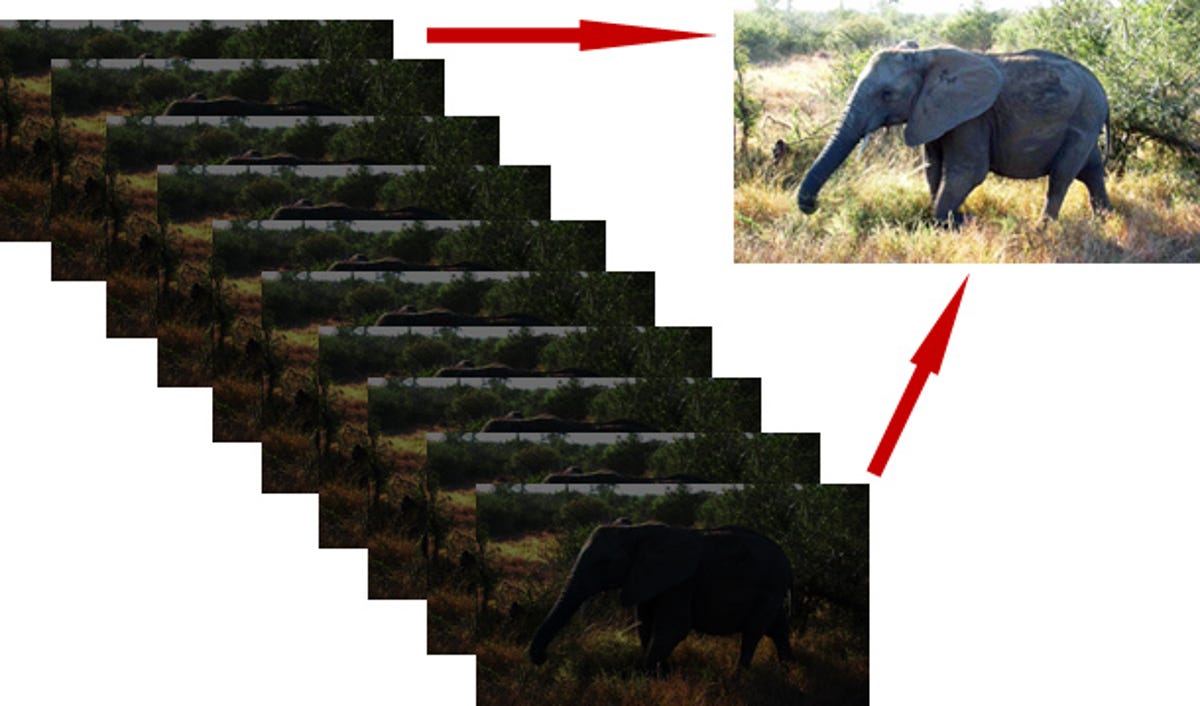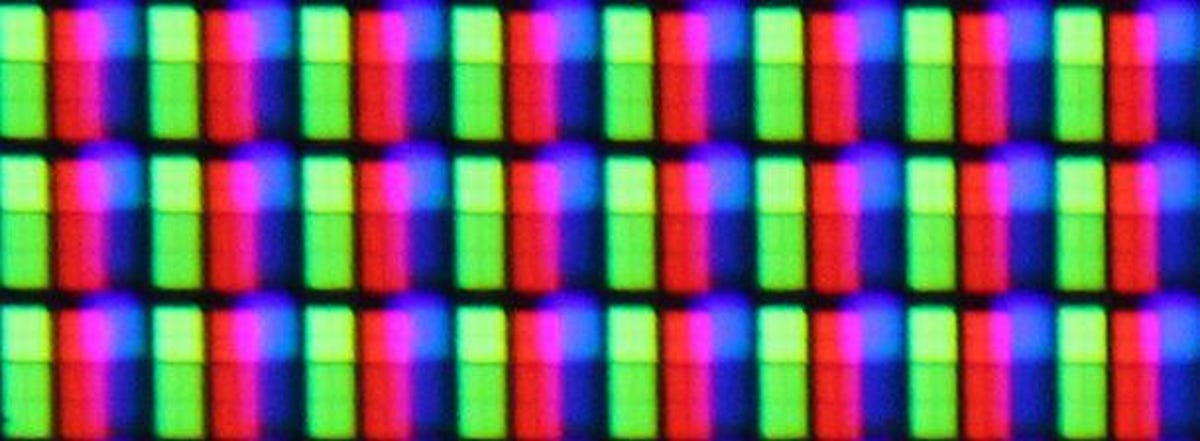
Geoffrey Morrison/CNET
If you read my “What is refresh rate?” post, you’ll know that plasma TV manufacturers (Panasonic, Samsung, and LG) make a point in claiming a “600Hz” refresh rate on their TVs. As we discussed in that article, it’s not exactly comparable to LCD’s 120 and 240Hz refresh.
So what is 600Hz, and how does it work?
By its nature, this is a pretty complex subject, so bear with me, and forgive some over-simplifications.
Before we get to 600Hz, we have to discuss how plasma TVs create an image in the first place. Like all modern TVs, they have more than 2 million individual pixels: 1,920 x 1,080 = 2,073,600. (Some lower-priced models are 1,024×768, so they have 786,432 pixels).
Each of these pixels has three subpixels, one each for the primary colors of red, green, and blue. If you were to stick your face right up to the screen, the pixels would look something like this:


Geoffrey Morrison/CNET
There are a few variations, like certain Samsung plasmas having a PenTile layout, but the basic functionality works the same. For simplicity, we’ll just talk about traditional RGB subpixels.
If all three subpixels are lit, and your face isn’t right against the screen, the pixel will appear white. If just the red and blue subpixels are lit, you’ll get magenta. Just red and green, and you’ll get yellow. Mix and match these and you’ll get more colors than the paint aisle at Home Depot (well, maybe, but we’ll get to that).
It’s the mixing and matching that is actually the tricky part.
Each subpixel is actually a little bucket of air, a noble gas to be specific. If you send a jolt of electricity though this gas, it and the electronics within the bucket emit UV light. This UV light, all excited from its recent magical conjuring (note: it’s not magic), wants to get everything else in on the action. In the case of the subpixel, the only “else” that’s there is a lining with a colored phosphor. When excited by the UV light, this phosphor emits its own light, either red, green, or blue, depending on the subpixel.
Got that? In short, each subpixel creates light by energizing a phosphor, which glows a single specific color.
Not only does it glow a specific color, though, it glows one specific brightness. Each subpixel has only two states: on or off. Like a light switch.
As you can imagine, this makes creating a normal-looking image rather tricky. After all, how do you get gray when all you can create is black or white? Or to be specific, how do you create “purple” when all you can create is blue, magenta, red, or black? The trick is called “pulse-width modulation,” which is a fancy way of saying, you turn it on and off a lot, and really fast.
Say you flip a light switch 10 times in a minute (kids, don’t try this at home). Evenly spaced, the light will be on for 6 seconds, then off for 6 seconds. For the whole minute, it’s on for a total of 30 seconds, and off for 30 seconds, right? Something like this:


Geoffrey Morrison/CNET
On average, the total amount of light in the room is 50 percent of what’s possible. You have a maximum (light on) and a minimum (light off) each half the time. If you increase how often you switch the light, so fast that you no longer see the light turn on and off, instead of a flashing light bulb, the room will just appear dimly lit.
Related stories
- LED LCD vs. plasma vs. LCD
- Active 3D vs. passive 3D: What’s better?
- Why 4K TVs are stupid
- Contrast ratio (or how every TV manufacturer lies to you)
- OLED: What we know
- Why all HDMI cables are the same
- 1080i and 1080p are the same resolution
This is, in essence, how a plasma works. As a plasma TV engineer once told me (and I mentioned in the refresh article), plasmas create light with time. To create different shades of gray, the pixel is on (or off) for more often.
Because our TV system is 60Hz (or in some places, 50Hz), and each one of those cycles has to be a complete image — for example 60 images per second (or 50) — a plasma has to switch the subpixels on and off very rapidly. For many years, plasmas had eight of these potential on/off cycles for every frame of the image. You could call these, to steal the modern parlance, 480Hz. Most plasmas now have 10.
While not completely accurate, you can sort of think of it as the TV creates 10 dark images that your brain combines into one, full-brightness, image, 60 times a second. Something like this:


Geoffrey Morrison
Bottom line
As we discussed in “What is refresh rate?,” LCDs use a higher-than-normal refresh rate to combat motion blur. Plasmas, by how they work, don’t have an issue with motion blur. The 600Hz claim by all the current plasma TV manufacturers has to do with how the TVs create an image, but is not 600 images per second.
So yes, 600Hz is a marketing term. However, because plasmas don’t require faster refresh rates to produce a clear, sharp image, and this is technically how they work, it’s fair to give Panasonic, LG, and Samsung a pass…for this one.
Got a question for Geoff? Send him an e-mail! If it’s witty, amusing, and/or a good question, you may just see it in a post just like this one. No, he won’t tell you which TV to buy. Yes, he’ll probably truncate and/or clean up your e-mail. You can also send him a message on Twitter: @TechWriterGeoff.




